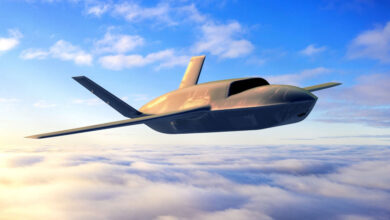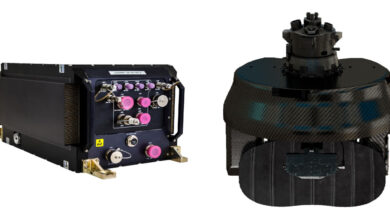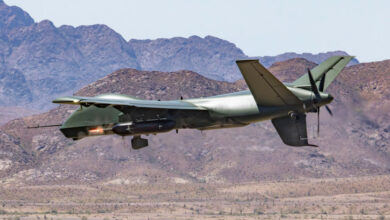India Set to Order High Altitude SeaGuardian Unmanned Drones Shortly from US, indicates Admiral R Hari Kumar
- US to Help India in Developing HALE Technology
- US to set up an MRO for SeaGuardians in India
By Gulshan Luthra
New Delhi. The Indian Navy is working on acquiring sophisticated drones for Combat and ISR roles and the much-awaited AoN for 30 High Altitude SeaGuardians “would be fielded Very Shortly.”
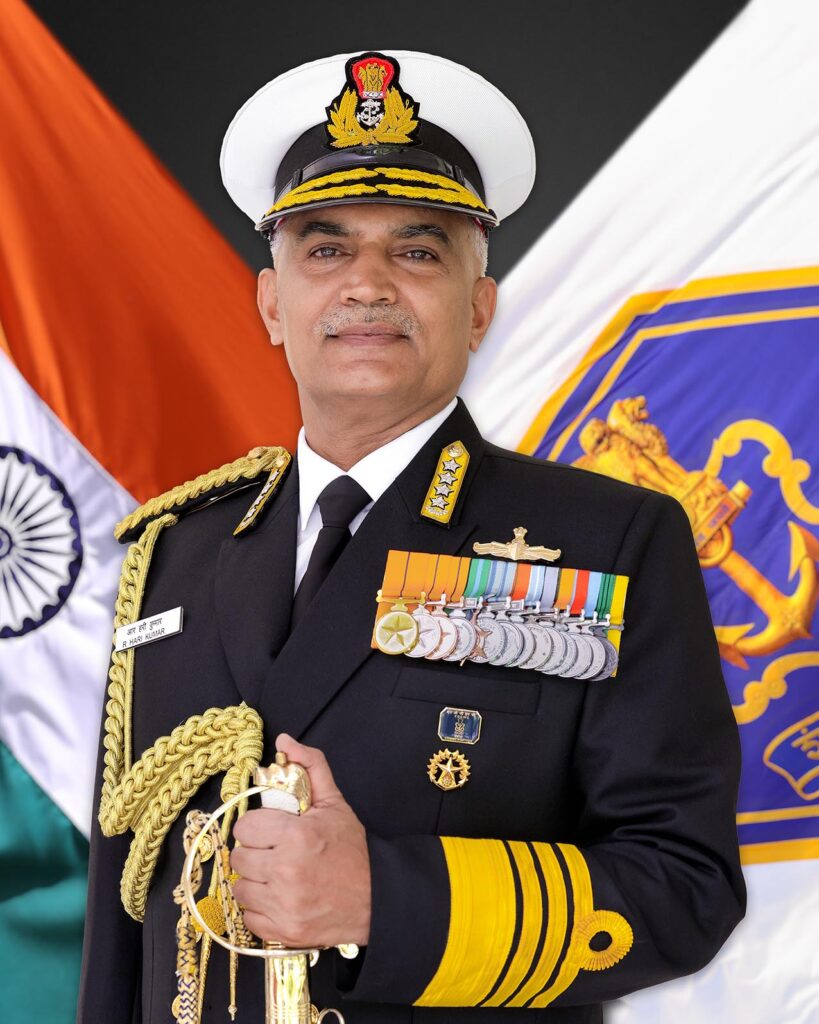
Chief of Naval Staff Admiral R Hari Kumar told India Strategic in an interview that the case for 30 (General Atomics) MQ 9B HALE RPAS (SeaGurdians) is “ready in all respects and would be fielded for accord of AoN very shortly.” The Indian Navy is already operating two unarmed MQ 9A Reapers for Intelligence, Surveillance and Reconnaissance (ISR) deep in the Indian Ocean, and, he observed the “Indian Navy’s experience with leased operations of SeaGuardian has been good and therefore, IN is actively pursuing a case for procurement of these aircraft.”
The Navy was the first Service to ask for SeaGuardians, the specific variant for monitoring ocean waves and depths, of the General Atomics generally-named Predator system, but later the Indian Air Force and Army also put up their requirements. So a figure of 30 of these highly sophisticated RPAS, or Remotely Piloted Aircraft System, was worked out with 10 aircraft for each Service. The requirement covers both Intelligence, Surveillance and Reconnaissance (ISR) and Attack systems, the same that the US Air Force has used to locate and attack targets in Afghanistan with remote control joysticks and consoles in the hands of combat pilots on ground stations maybe in California or wherever.
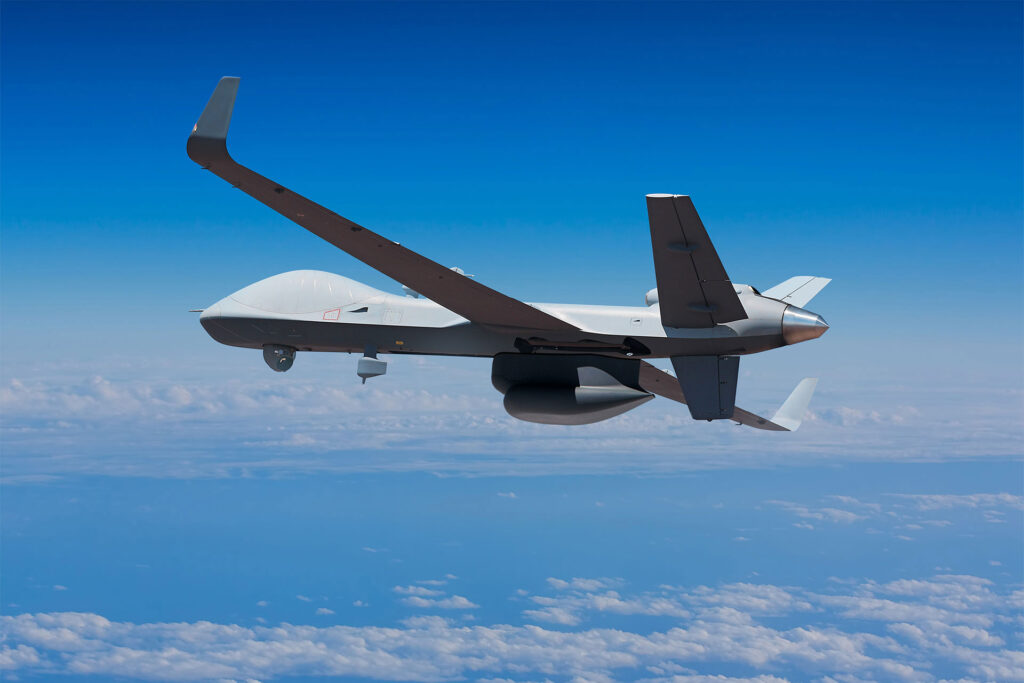
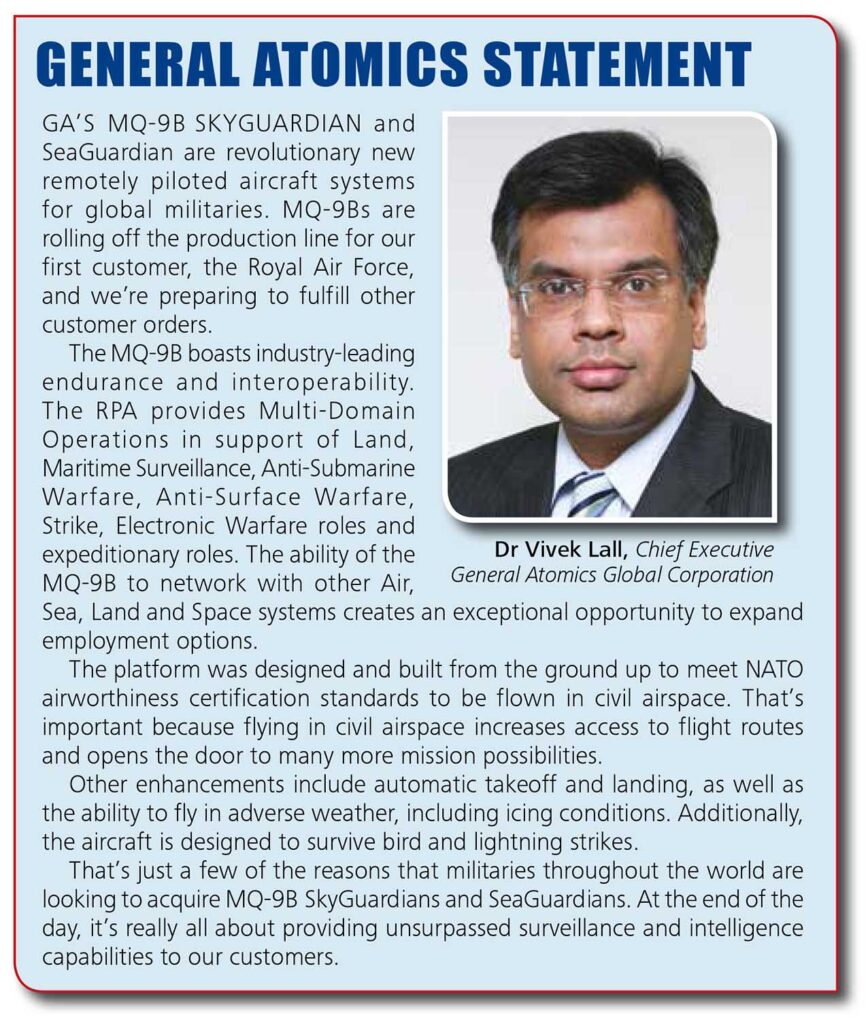
The initial Indian proposal was only for ISR capability, but when Prime Minister Narendra Modi visited Washington in 2019, India pressed for attack capability and President Donald Trump agreed to that, thanks to negotiations by PM’s National Security Adviser Ajit Doval. Under the US Laws, sophisticated technologies can be shared with other countries only through the Foreign Military Sales (FMS) route with the approval of the President himself in high technology cases, and the Departments of State and Defense.
The recipient country has to be a good friend in simple words, and President Trump certified that. Then, there is Congressional oversight and support for the transaction is required from legislators in Washington also.
First Confirmation of the Deal
Notably, this is the first time that a Service Chief has gone on record to say that the Acceptance of Necessity (AoN), or the first firm step in approval by the Ministry of Defence, and the Cabinet Committee on Security (CCS) for required funding, is around the corner. That indicates the order for these highly advanced Unmanned aircraft is not far on the horizon. As the first operator, the Indian Navy is the lead Service in the acquisition process, and recently, Chief of Air Staff Air Chief Marshal VR Chaudhari also told this writer to check with the Navy about the progress about these highly advanced drones.
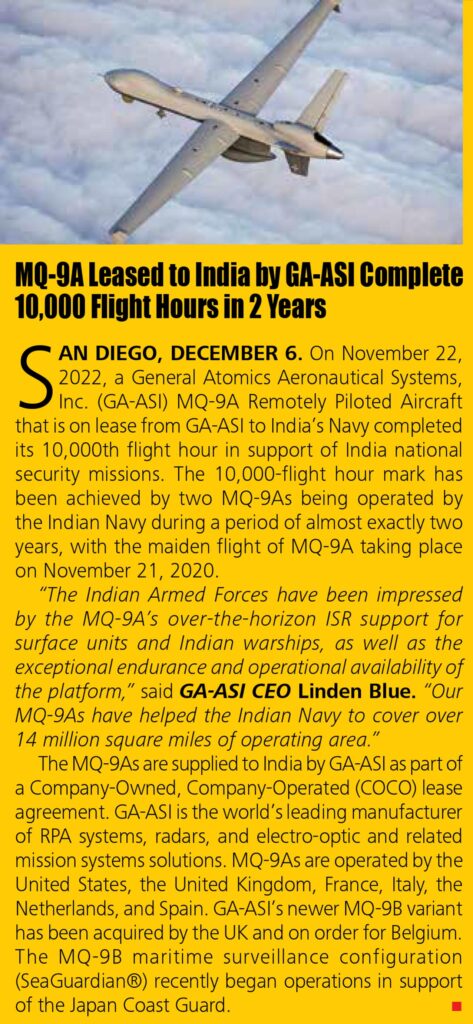
Admiral Hari Kumar made two other significant disclosures: That the US Government has agreed for collaboration with India’s DRDO towards developing indigenous High Altitude Long Endurance (HALE) RPAS in India, and, also to set up a Maintenance, Repair and Overhaul (MRO) facility for the SeaGuardians in India. Besides, the MRO would be a SeaGuardian Global Sustainment (SGSH) hub, where this system from any country could be serviced.
Said Admiral Hari Kumar: “These enabling agreements would make India a Drone Hub as envisioned by Hon’ble Prime Minister. The Joint case is ready in all respects and would be fielded for accord of AoN very shortly. Once inducted these assets would be a game changer for the three Services.”
Predator/ Reaper/ SeaGuardian/ SkyGuardian
The General Atomics SeaGuardian can fly comfortably for 24 hours or more, depending upon the variant configuration, requirement and payload like cameras or precision weapons. Armed with Hellfire missiles, a Predator can hit a jeep, Vehicle, or a human target like a terrorist from far above.
The formidable Predator/ Reaper/ SeaGuardian/ SkyGuardian variants are made only in the US by its crown jewel technology company, General Atomics, and the US has sold these systems only to its close allies or strategic friends. India is a member of the QUAD, the four-nation friendly alliance of US, India, Japan and Australia to secure the international Sea Lines of Communications (SLOC), or maritime routes. China is a challenge to all, QUAD and other countries, particularly in the Indian Ocean, where it has aggressively been building bases or facilities as in Pakistan, Sri Lanka, Maldives and Djibouti.
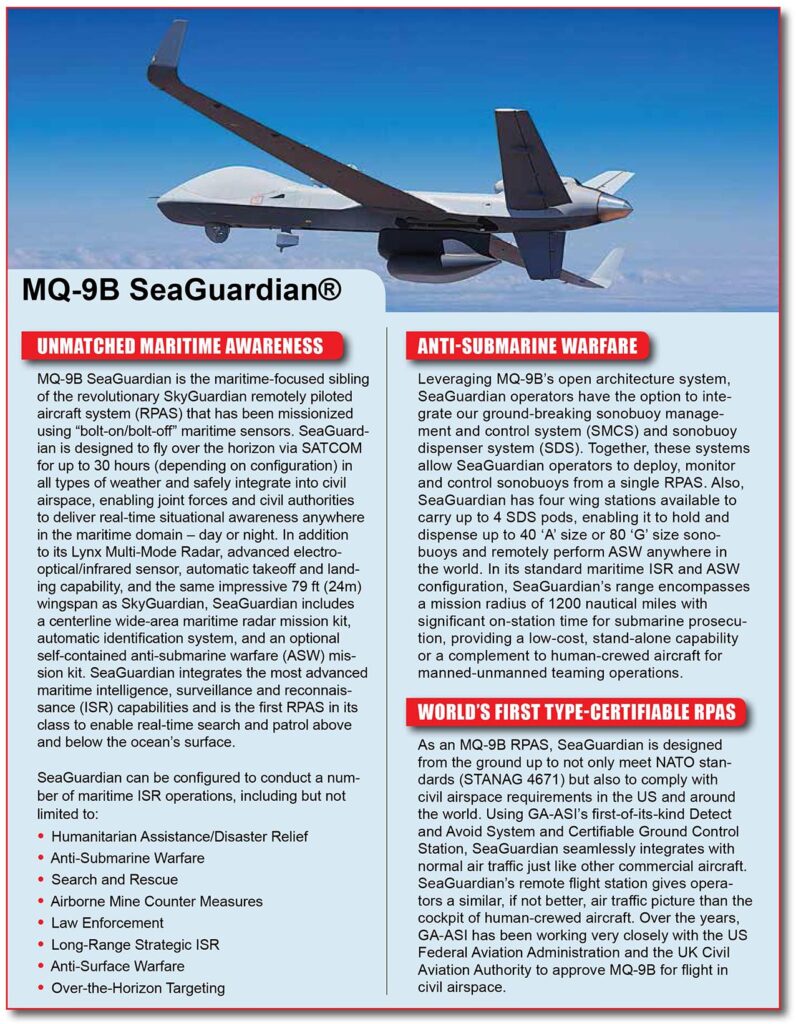
China has steadily been occupying faraway islands and atolls deep in the southern Indian Oceans, even in Antarctica, while in the Himalayas on borders, it has been slicing away uninhabited tough terrains of India’s Himalayan territory over the years. Negotiations only mean Two Steps Forward, One Step Backward for them to disengage and diffuse tension. Then they repeat the incursion elsewhere.
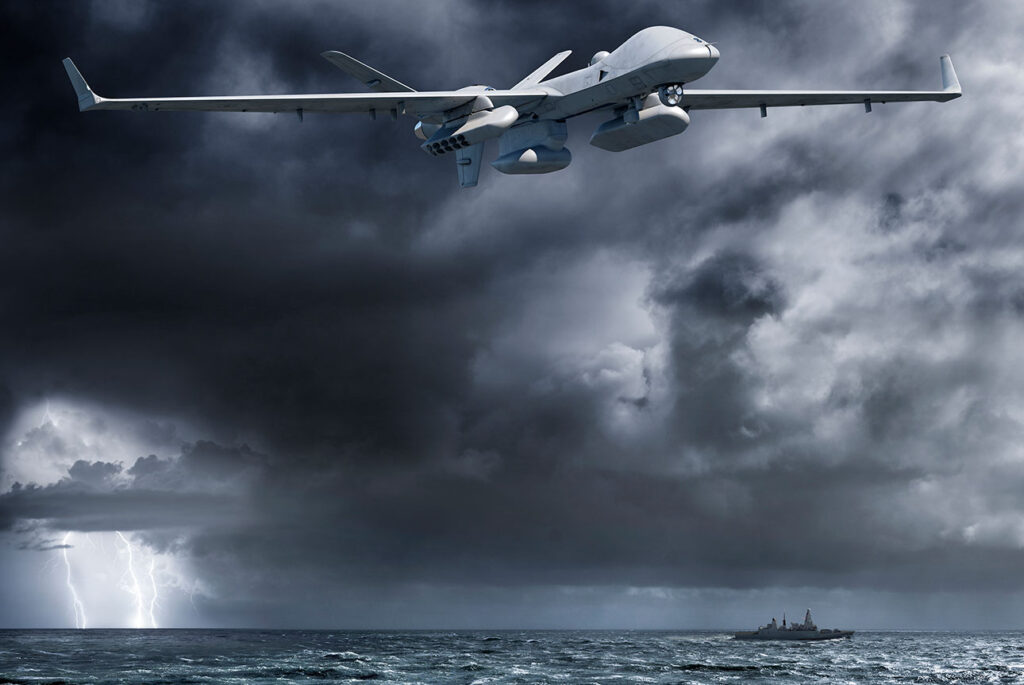
Troops on either side of the border are not allowed to carry weapons to a depth of 2km as per a mutual arrangement to avoid armed faceoffs. Nonetheless, the Chinese used barbed wire clubs to hit the unarmed Indian soldiers three years back; the Indian Army is now repaying them with the same barbs.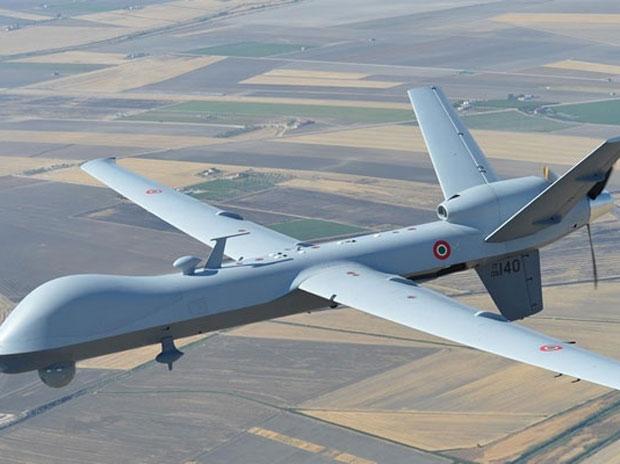
The Indian Army, Air Force and Navy have been operating Israeli drones since the late 1990s for surveillance, but the induction of the SeaGuardian would mean tremendous capability in discovering the rogues and then destroying them. In a serious situation, own or friendly forces can be called, and that is true even for alerting in Disaster Management. Any sophisticated capability has multiple uses.
Admiral Hari Kumar pointed out that “though IN has been operating RPAs for the last two decades, operations of SeaGuardian have greatly enhanced our surveillance capabilities. SeaGuardian RPA has enabled IN to increase surveillance activities over vast areas of Indian Ocean region ranging from Sunda Strait to the Gulf of Aden. The high endurance of the RPAs has enabled IN to maintain persistent surveillance over larger areas.”
The Admiral also stressed the role of inter-Services cooperation in making the best of their resources and their future plans.


